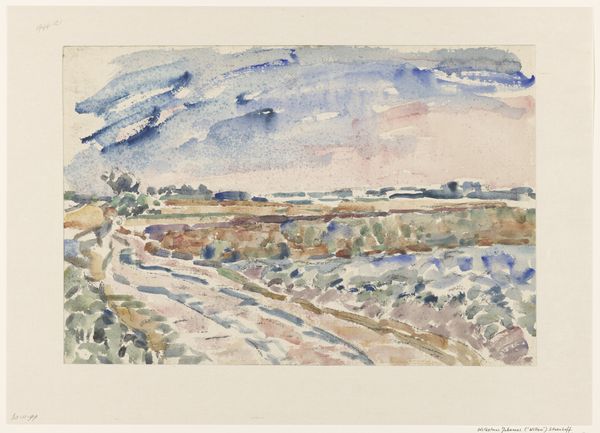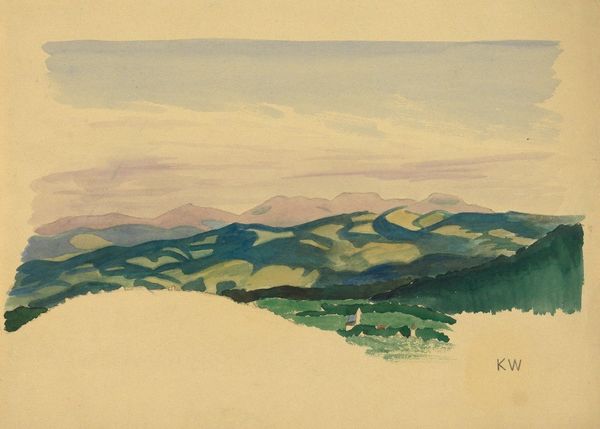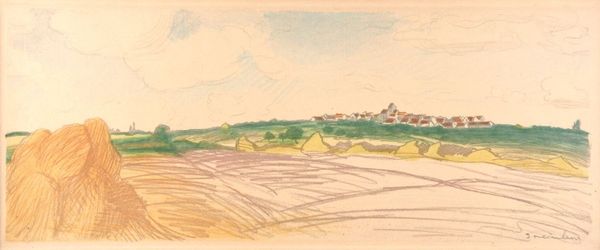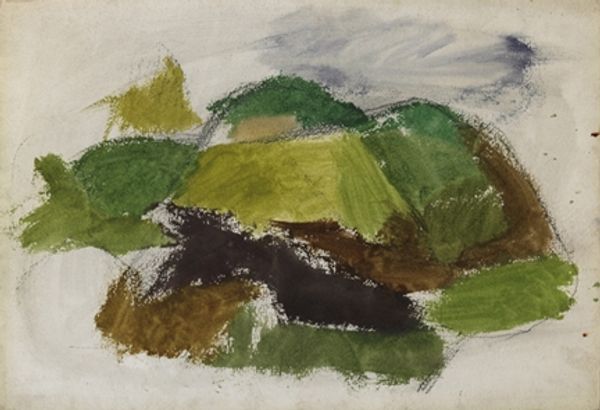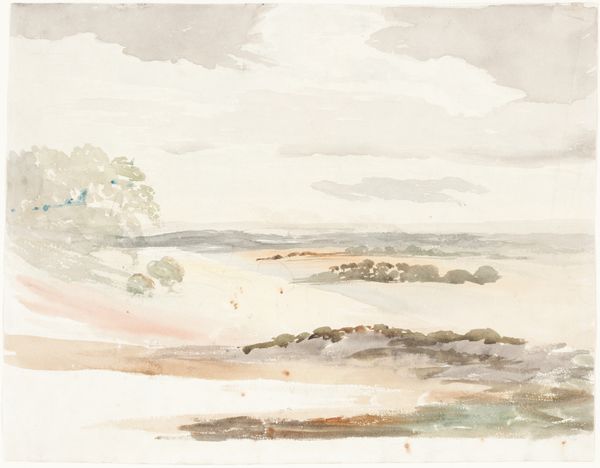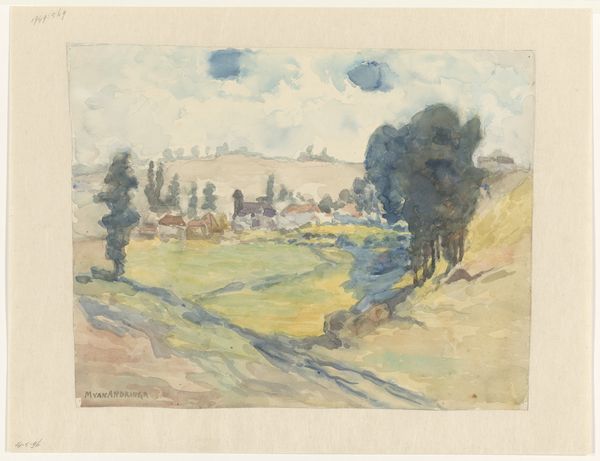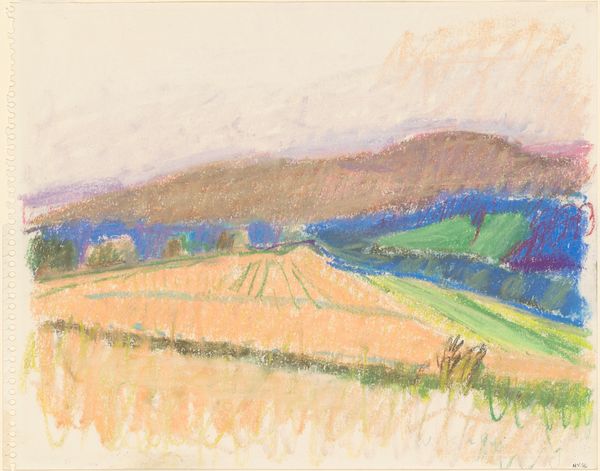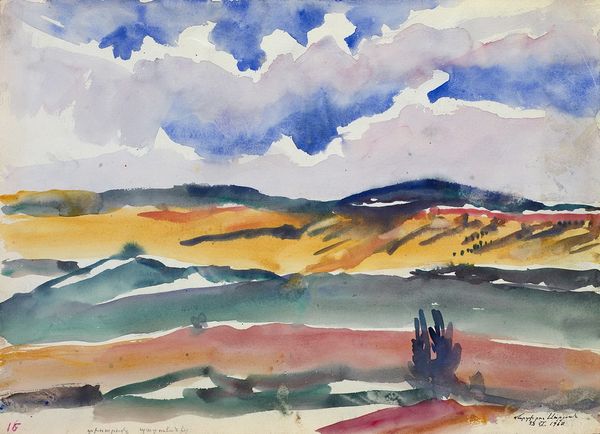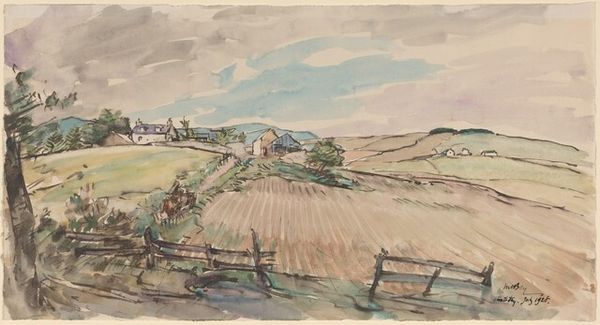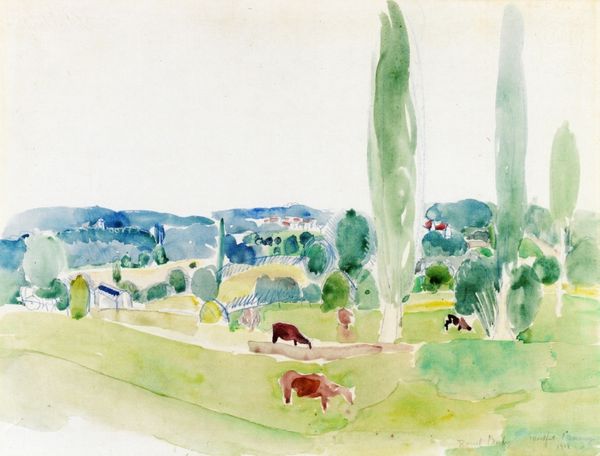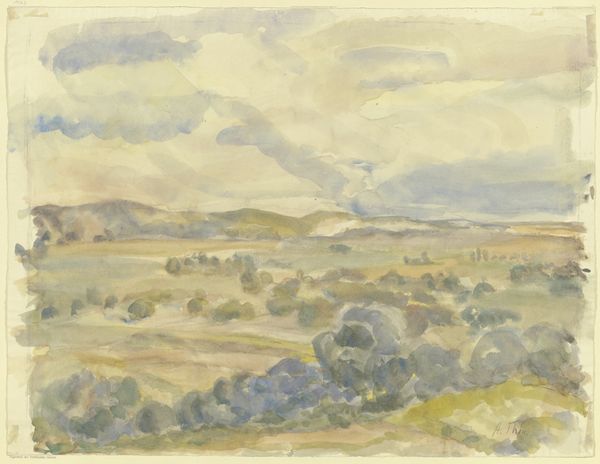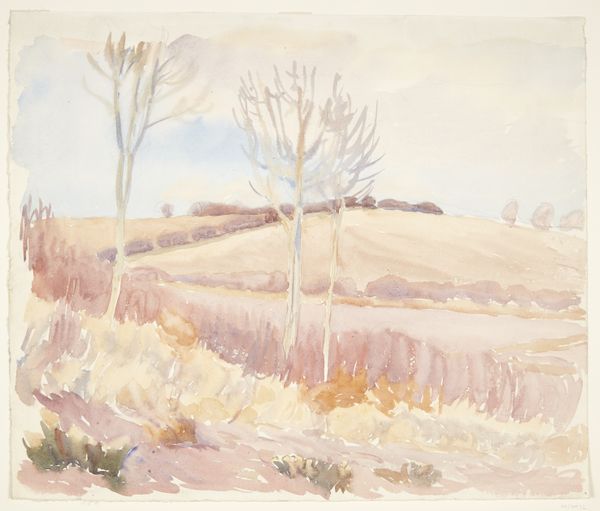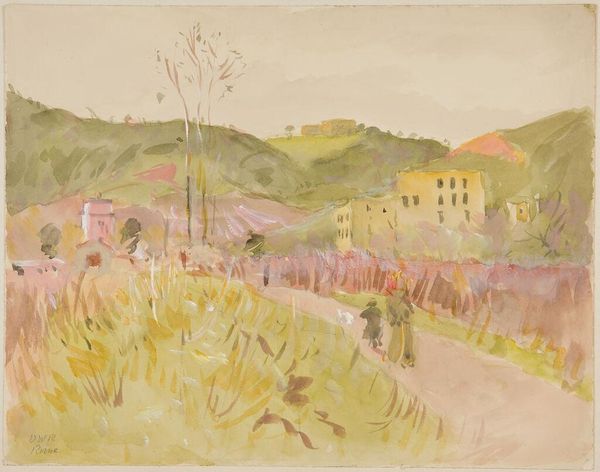![Untitled [landscape] by Richard Diebenkorn](/_next/image?url=https%3A%2F%2Fd2w8kbdekdi1gv.cloudfront.net%2FeyJidWNrZXQiOiAiYXJ0ZXJhLWltYWdlcy1idWNrZXQiLCAia2V5IjogImFydHdvcmtzLzFkYWI1ZTBjLWFlZjMtNDJhNS05N2QwLTE2MDU1ZmY1M2NmNi8xZGFiNWUwYy1hZWYzLTQyYTUtOTdkMC0xNjA1NWZmNTNjZjZfZnVsbC5qcGciLCAiZWRpdHMiOiB7InJlc2l6ZSI6IHsid2lkdGgiOiAxOTIwLCAiaGVpZ2h0IjogMTkyMCwgImZpdCI6ICJpbnNpZGUifX19&w=3840&q=75)
#
bay-area-figurative-movement
Dimensions: overall: 25.5 x 35.5 cm (10 1/16 x 14 in.)
Copyright: National Gallery of Art: CC0 1.0
Curator: We’re looking at Richard Diebenkorn’s "Untitled [landscape]", a watercolor on paper created sometime between 1955 and 1967. Editor: The initial impression is strikingly calm, wouldn't you agree? It's a gentle watercolor, almost washed out, with this band of blue that feels almost melancholic against the somewhat undefined landscape. Curator: That calm belies Diebenkorn's broader explorations of modernist abstraction and, more broadly, the shift in postwar American art away from figuration. While a landscape, its flattened perspective and somewhat muted palette suggest an engagement with both Impressionist and Post-Impressionist conventions. I mean look at his reductive simplification of nature! Editor: Right. It's fascinating how he uses color blocking – patches of greens, yellows, and pinks – to evoke rather than explicitly represent the scene. Are we looking at a societal commentary on urbanization by the artist, the transformation of pastoral idylls? Curator: Interesting! I would argue Diebenkorn’s work doesn’t specifically push an agenda per se; there is little textual evidence to demonstrate social or political anxiety. More interesting, I think, is examining how art institutions positioned him. Think about how he moved between figuration and abstraction. And think about how galleries sought to capitalize on that. Editor: Yes, certainly! The socio-economic structure underpinning it cannot be overlooked, it provides further context, but looking at the painting itself… there's also something about the unprimed paper and how the pigment soaks into it that creates this really ephemeral quality. It reminds you how temporal landscape can be, especially in this volatile social landscape. Curator: True, there is a sense of immanence suggested through his selection of medium, especially considering this artwork stems from a prolific and experimental time during Diebenkorn's career. Editor: I’m glad we looked at that in that way! It reminds me to consider that landscape not just as a place but also as a state of mind and its reflections back into society. Curator: Yes! It demonstrates to me the power and influence institutions can wield on both the artist and art history!
Comments
No comments
Be the first to comment and join the conversation on the ultimate creative platform.
